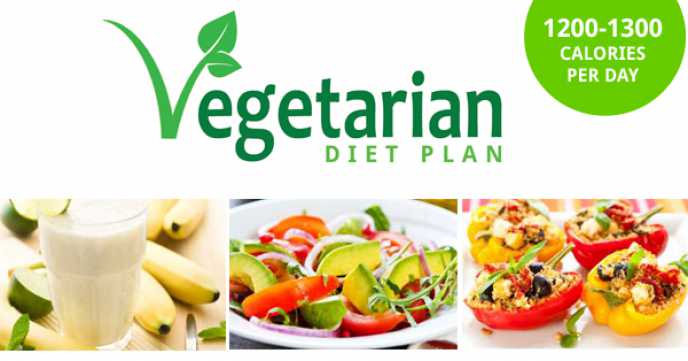
A ketogenic diet can be enjoyed by a vegetarian. A vegetarian keto meal plan will make it easy to eat well and feel satisfied. There are many different vegetarian keto recipes that you can try. These recipes are available in a variety of formats. Remember that you can always add meat, fish, and seafood to your diet if necessary.
Plant-based fats
A ketogenic diet should not be without plant-based oils. They regulate your appetite and increase metabolism. They improve insulin sensitivity, and glycemic control. These foods contain fiber, which slows down glucose absorption in the intestine and reduces spikes in blood sugar.
Vegetarians often rely upon legumes and grain for their nutritional needs. Ketogenic diets for vegetarians limit the intake of certain foods. Vegetarians can still benefit from plant-based fats. For optimal health, it is crucial to consume sufficient amounts of omega-3 fat acids.

The ketogenic diet may also include vegetables proteins. Although they are not as bioavailable as animal-based protein, they still count toward the total protein requirement. They help with muscle growth, performance, as well as general health. And they are great sources of Omega-3s.
While the ketogenic diet for vegetarians may seem restrictive, it can be successful in helping people lose weight. Since the diet is low in carbohydrates and lean proteins, weight loss is largely due to calorie restriction. It can be difficult to get the energy you need from the diet. Also, you must be careful not to lose too much weight, as it might be hard to replace the lost weight later in life.
Vegan ketogenic diet is a great way to eat vegetables. The diet is low on carbohydrates and rich in healthy oils. A vegan ketogenic diet should have around seventy-five% fat and 25% protein. Those with a high carbohydrate intake should limit their carbohydrates to around 50 grams daily.
Plant-based protein
Plant-based protein powders are available in a variety of flavors and nutritional profiles. Some options include hemp, pea, rice, and pumpkin seed. These can be substituted with animal-based proteins and provide high levels protein and fiber. These powders often have a low glycemicindex and are an excellent choice for those who are on a low carb diet.

Vegetarians tend not to eat a lot of legumes or grains as they are rich in protein and fat. A vegan ketogenic diet is a good alternative to meat and can be a great source of high-quality protein. Vegans should ensure they are getting a wide range of healthy fats, including omega-3s. This will improve their body's ability respond to insulin and their glycemic control. To determine the amount of each type, protein or fat that should be consumed daily, a keto calculator can be helpful.
While plant-based proteins are less bioavailable than animal proteins, they still count towards the daily recommended intake. These proteins can be used by the body to support muscle health and general well-being. They are also a good source for B12. However, there are some limitations to eating plant-based proteins.
Vegetables are a great alternative to meat, and some of the lower carbohydrate options are tofu and tempeh. While these choices may seem like an easy option, be aware that these products may contain added sugar or unexpected carbohydrates. Another option for vegetarians on a low-carb diet is to eat a large amount of low-carb vegetables such as asparagus, broccoli, celery, and spinach.
FAQ
Exercise: Is it good or bad for immunity?
Exercise is good to your immune system. Exercise boosts the production of white blood cells in your body that fight infections. You also get rid toxins. Exercise can help you avoid heart disease and other illnesses like cancer. It reduces stress.
But, too much exercise can lead to a weakening of your immune system. When you exercise too hard, your muscles will become sore. This can lead to inflammation and swelling. Your body then needs to make more antibodies in order to fight infection. The problem is that these extra antibodies can cause allergies and autoimmune disorders.
So, don't overdo it!
How does an anti-biotic work?
Antibiotics are drugs which destroy harmful bacteria. The treatment of bacterial infections is done with antibiotics. There are many different types of antibiotics. Some are taken orally, some are injected, and others are applied topically.
Antibiotics are often prescribed to people who have been exposed to certain germs. An oral antibiotic might be prescribed to someone who has been exposed to chicken pox. This will prevent the spread of shingles. An injection of penicillin may be necessary to prevent pneumonia if someone has strep.
A doctor should give antibiotics to children. Children are more susceptible to side effects from antibiotics than adults.
Diarrhea is the most common side effect from antibiotics. Other side effects include dizziness, nausea and vomiting, dizziness, stomach cramps, dizziness, allergic reactions, dizziness, dizziness, stomach cramps, diarrhea, nausea, vomiting, allergy, headaches, dizziness, dizziness, dizziness, stomach cramps, and stomach cramps. These side effects typically disappear once treatment is complete.
What weight should I be based on my age and height. BMI calculator & chart
The best way to determine how much weight you need to lose is to use a body mass index (BMI) calculator. A healthy BMI range should be between 18.5- 24.9. You should lose about 10 pounds each month if you are trying to lose weight. To calculate your BMI, simply enter your height and weight into the BMI calculator.
This BMI chart can help you find out if or not you are obese.
What can be done to increase your immune system's effectiveness?
The human body consists of trillions of cells. Each cell is responsible for creating organs and tissues with specific functions. Another cell takes its place when a cell dies. Cells communicate with one another using chemical signals called hormonal hormones. All bodily processes are controlled by hormones, including metabolism and immunity.
Hormones are chemicals secreted by glands throughout the body. They travel through blood stream and act as messengers that control the function of our bodies. Some hormones are produced in the body, while others are created outside.
When a hormone-producing gland releases their contents into the bloodstream, hormone production begins. Once hormones are released they move through the bloodstream until reaching their target organ. Some hormones may only remain active for a limited time. Other hormones stay active longer and continue to influence the body's functioning even after they leave the bloodstream.
Some hormones can only be produced in large quantities. Others are made in very small amounts.
Some hormones only are produced during certain periods of life. For example, estrogen is made during puberty. Estrogen aids women in developing breasts, maintaining bone density and preventing osteoporosis. It helps to stimulate hair growth and maintains skin's softness.
How can I lower my blood pressure
The first thing you need to do is find out what causes high blood pressure. Next, you must determine the cause and take steps to decrease it. This could be as simple as eating less salt, losing weight (if necessary), or even taking medication.
Exercise is also important. If you don't have time for regular exercise, then try walking as often as possible.
Consider joining a gym if your current exercise regimen is not satisfying you. You'll probably want to join a gym where there are other people who share your goals. It is easier to adhere to a fitness routine when someone else will be there with you.
How can I tell what is good for me?
Listening to your body is essential. Your body knows what you need when it comes time to eat, exercise, and get enough rest. Your body will tell you what to do so that you don't go overboard. Pay attention to your body, and ensure that you're taking care of your health.
How do I count calories?
It is possible to wonder "what the best diet is for me?" or "is counting calories necessary?" This depends on several factors like your current health and personal goals. Your preferences and overall lifestyle.
The Best Diet for me - Which One Is Right for You?
My personal health, goals, lifestyle and preferences will all influence the best diet. There are many good and bad diets. Some work well for certain people while others don't. So what do I do? How do I make the right choice
These questions are addressed in this article. It starts with a brief introduction of the different types of diets available today. Next, we will discuss the pros & cons of each kind of diet. Then, we will discuss which diet is the best.
Let's first take a look at different diets.
Diet Types
There are three main types of diets: low fat, high protein, and ketogenic. Let's look at each one briefly.
Low Fat Diets
A low fat diet reduces the amount of fats you eat. This is achieved by reducing saturated fat intake (butter, cream cheese etc.). and replacing them with unsaturated fats (olive oil, avocados, etc.). For those looking to lose weight quickly, a low fat diet is often recommended. This type of diet can lead to constipation and heartburn as well as indigestion. If a person doesn’t receive enough vitamins from their foods, this can lead to vitamin deficiency.
High Protein Diets
High protein diets restrict carbohydrates in favor of proteins. These diets usually have higher amounts of protein than other diets. They can help you build muscle mass, and also burn more calories. However, they might not provide enough nutrition for those who need to eat frequently. They are not suitable for all people because they can be restrictive.
Ketogenic Diets
These diets are also known under the name keto diets. They are high fat and moderately carbohydrate and protein-rich. Athletes and bodybuilders use them because they allow them more time and harder training without getting tired. They do require strict compliance to avoid any side effects like fatigue, headaches, nausea, and headaches.
Statistics
- WHO recommends reducing saturated fats to less than 10% of total energy intake; reducing trans-fats to less than 1% of total energy intake; and replacing both saturated fats and trans-fats to unsaturated fats. (who.int)
- Extra virgin olive oil may benefit heart health, as people who consume it have a lower risk for dying from heart attacks and strokes according to some evidence (57Trusted Source (healthline.com)
- The Dietary Guidelines for Americans recommend keeping added sugar intake below 10% of your daily calorie intake, while the World Health Organization recommends slashing added sugars to 5% or less of your daily calories for optimal health (59Trusted (healthline.com)
- WHO recommends consuming less than 5% of total energy intake for additional health benefits. (who.int)
External Links
How To
How to live a healthy lifestyle
Healthy living is a lifestyle that helps you maintain your weight, good health, and your fitness. Healthy living means eating right, exercising regularly, getting enough rest, and staying away from harmful substances like alcohol, tobacco, cocaine, and drugs. A healthy lifestyle can help you stay fit and feel great. You are also less likely to develop chronic diseases such heart disease and stroke, diabetes or cancer.
This guide provides a step by step guide for living a healthier and happier life. The introduction was the first portion of the project. It describes the benefits of living a healthy life, what it means, and who we should be. The body paragraphs contain tips on how you can maintain a healthy lifestyle. I then wrote the conclusion. This summarizes the whole article, and provides additional resources, if necessary.
This assignment taught me how to write a concise paragraph. Also, I learned how my ideas could be organized into topic sentences or supporting details. My research skills were also improved as I had to search for specific sources and cite them correctly. I also learned how to write with proper grammar.